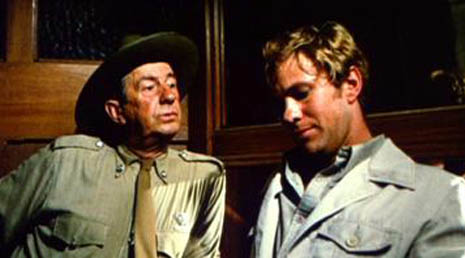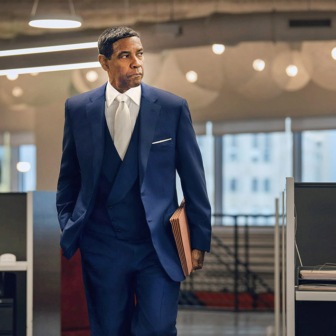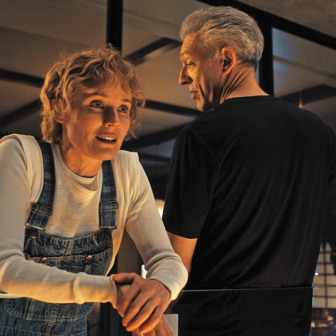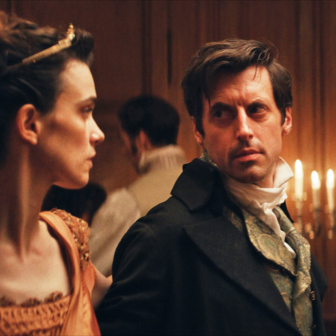I KNOW an English bloke, an artist, who came here in the mid 70s, knowing nothing about Australia except what he’d seen in Wake in Fright. He landed in Darwin’s tin-shed airport, which was always sweltering even if – as the planes from London often did then – you landed at 2am; the place seemed uncomfortably consistent with the film’s end-of-the-world outback imagery. He survived the town as it then was, and a caravan park a bit too close to a crocodile basking place. He stayed. He lives in inner-western Sydney. I think of him now because his arrival was rather like that of Ken Cook’s fictional schoolteacher John Grant, fetching up in Bundanyabba; read Broken Hill.
From that point there’s no similarity. Though the film makes the heat of central Australia palpable throughout, Grant’s ordeal has more to do with extreme culture shock. The story, in the film very much as in the novel, is about his passage from horrified affront to shrugging acceptance, then submersion in a raucous, brawling, virtually all-male milieu. Against his better instincts, he joins in a two-up game, wins a round or two, then loses everything, including the prospect of his leave in Sydney and the distant girlfriend; she is seen recurrently emerging from the surf, an unreal blonde vision in elegant red bathers. All Grant wants is to get to that coast, but even attempts at hitch-hiking fail; he’s trapped in Bundanyabba, the Yabba, which its old hands – typified by Chips Rafferty’s benignly sinister police sergeant – insist is the best town in Australia. Like the men around him, Grant drinks far too much, gets wrecked, goes through hallucinations, and throws himself, with an appalling, determined cheerfulness, into the kangaroo hunt. That protracted, barbaric sequence is the hardest thing of all to watch. These kangaroos look at their murderers, and at us. A frame of text at the end tells us that the slaughter was conducted by “professional hunters.”
Maybe; but it is registered as a ghastly orgy, the wilful massacre of beautiful and innocent creatures. This is unequivocal, made so by Ted Kotcheff’s direction, the superb ensemble work of the cast, and the razor-sharp precision of Tony Buckley’s editing. The same skills bring home the force of Grant’s terror and disgust; it’s a version of one of the oldest stories, the ostensibly normal male who thinks he has it all together, and then makes a descent into hell.
All that could sound like in-your-face realism, and back in the 70s I think a good many of us took it that way. Women saw it as a feminists’ nightmare, carrying only too much of the truth about the unreconstructed Australian male; and I know a few who, in this season of the film’s welcome revival, say they couldn’t bear to look at it again. But the brilliant new print – for which we must thank Tony Buckley and the National Film and Sound Archive – is circulating to sizeable audiences in a changed Australia. A special screening last month in Broken Hill itself was packed out; and there, I’m told, its version of the town was taken with complete good humour by all concerned. There’s always a buzz in having your own neighbourhood seen as a location, particularly when the movie in front of you never was, really, about Broken Hill. Audiences accept the film’s ways of signalling, and rightly take it as a horror movie, a tale which – as Ted Kotcheff himself has remarked – could have been set down anywhere.
But horror movies are grounded in different ways; if nightmares didn’t connect to recognisable realities, they wouldn’t scare us as they do. Fending this one off, some say that Wake in Fright is decidedly set in the past: men don’t carry on like that any more. Others will contend that in fact they do, and so, what’s worse, do young people gathered en masse anywhere, the binge-drinking plague, and there the film might work as a fine temperance tract, a brutal tale on the perils of alcohol-driven regression. Along the way, the film sticks very closely to the novel; and Peter Temple, introducing the tie-in edition, goes intensely into Manning Clark mode. Kenneth Cook, he writes, “knows what it feels like to catch luck’s eye and hold the gaze across a smoky room… And he knows dark things – the frightening chasm that opens when certainty disappears, the savagery in the human heart.”
That is to take a moral, perhaps religious path into and out of the story. Other paths are possible. Wake in Fright is a version of the Australian inland, about the injuries of isolation, and the gulf between the country and the city. It operates a particular way of seeing the desert, opening with a high-level pan around flat, sandy emptiness, before coming down into the one-room schoolhouse – and the room full of kids, mixed ages, under orders to keep silent until the clock ticks three o’clock and they can race off for the holidays. (I haven’t seen anyone remarking on the way John Grant, being a bitterly discontented teacher, is also a pretty bad one.) Just where those children go is a question; Tiboonda consists of the railway siding, a couple of clapped-out buildings and the pub, where John Meillon’s Charlie emanates an essential fatalism.
From there Grant takes the slow train to Bundanyabba; in the carriage, he separates himself from some beery singing, and notices the solitary, silent Aboriginal stockman. The desert goes past; and by the time we reach the big town it’s clear that in this film’s vision the whole social world is sodden not only in beer but in futility. The country is the empty dead heart, the country town a dead end. That's how most of suburban white Australia perceived the outback for most of two centuries.
But since Wake in Fright was made thirty-eight years ago, there have been massive shifts in general consciousness on the nation’s deeply bicultural nature, on Aboriginal people, the inheritance of dispossession, the crucial idea of country in the Indigenous sense – and also on country towns, complicated places as they are, and now places which, more than ever, understand themselves historically. Watching now, but not then, it’s possible to think about the Bundanyabba milieu as a pack of blokes who, simply, didn’t know where they were.
I’m not talking about the way places have changed, though they undoubtedly have, but rather of how they’re seen. Wake in Fright, with its well-deserved prestige as a newly rescued, gutsy fable, was only one way of seeing. In feature-film terms, it’s high time we developed some others. •





